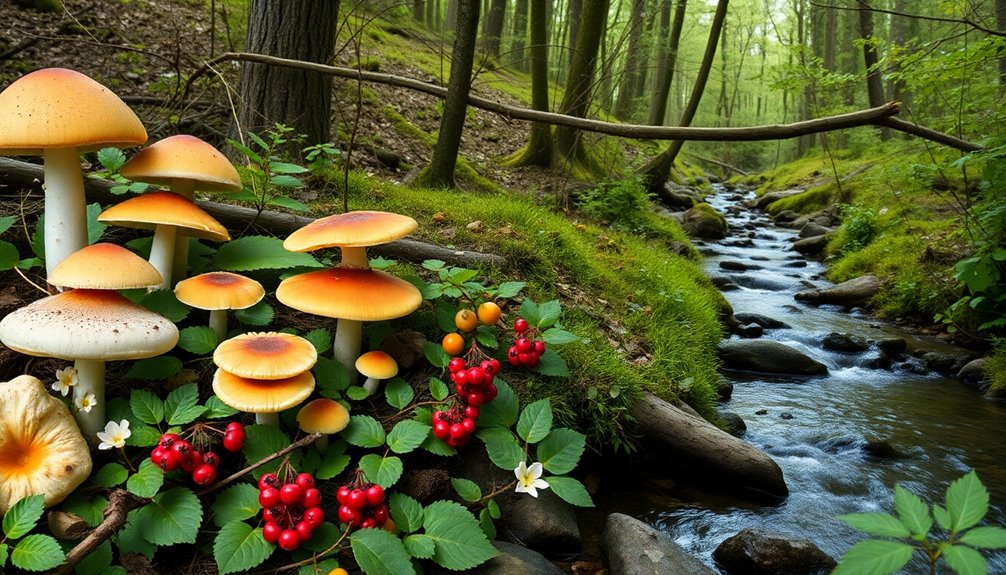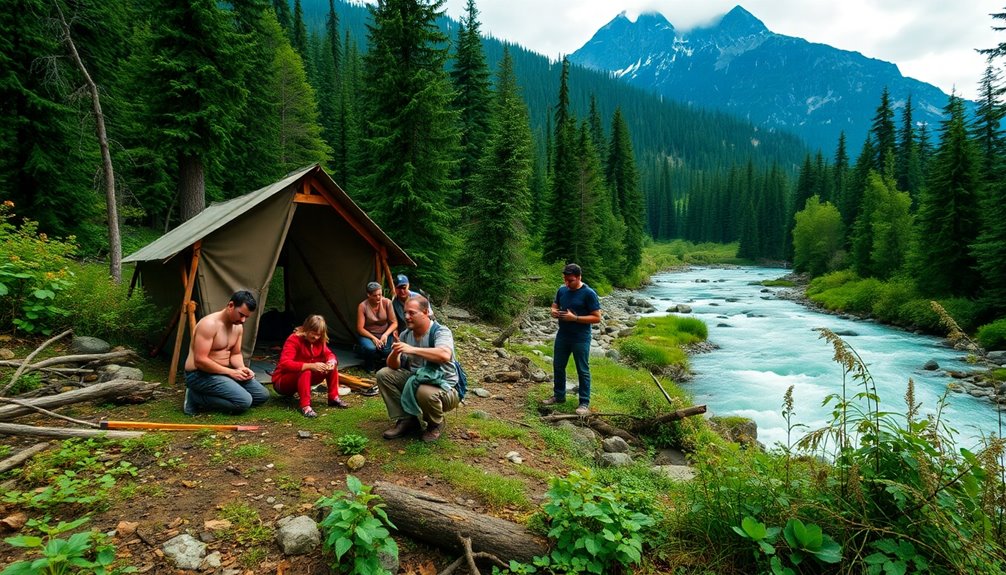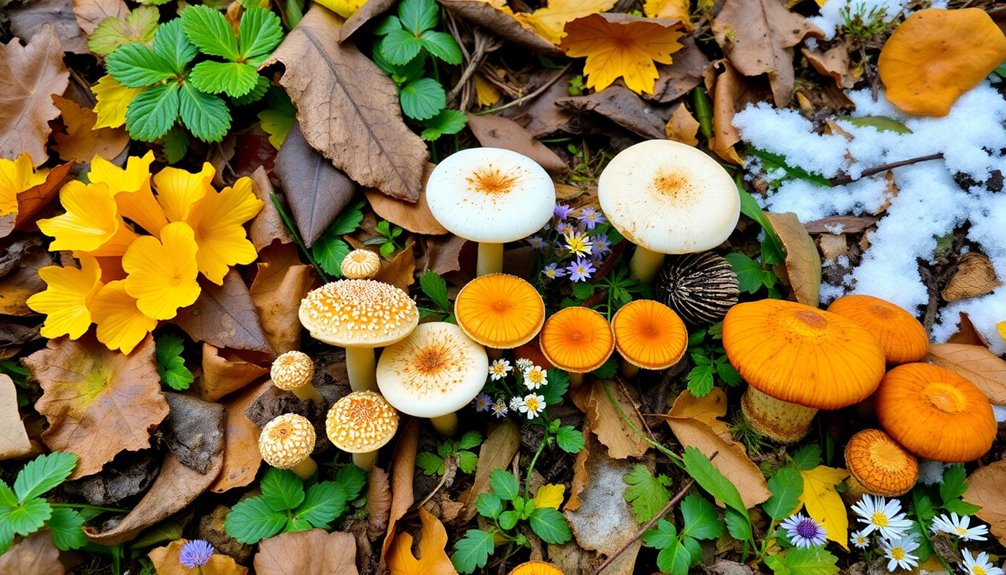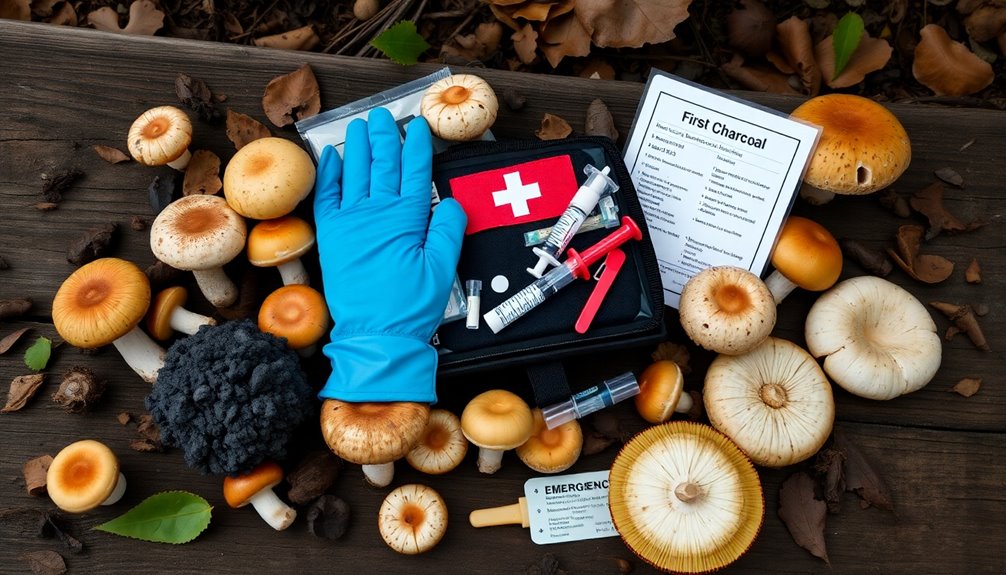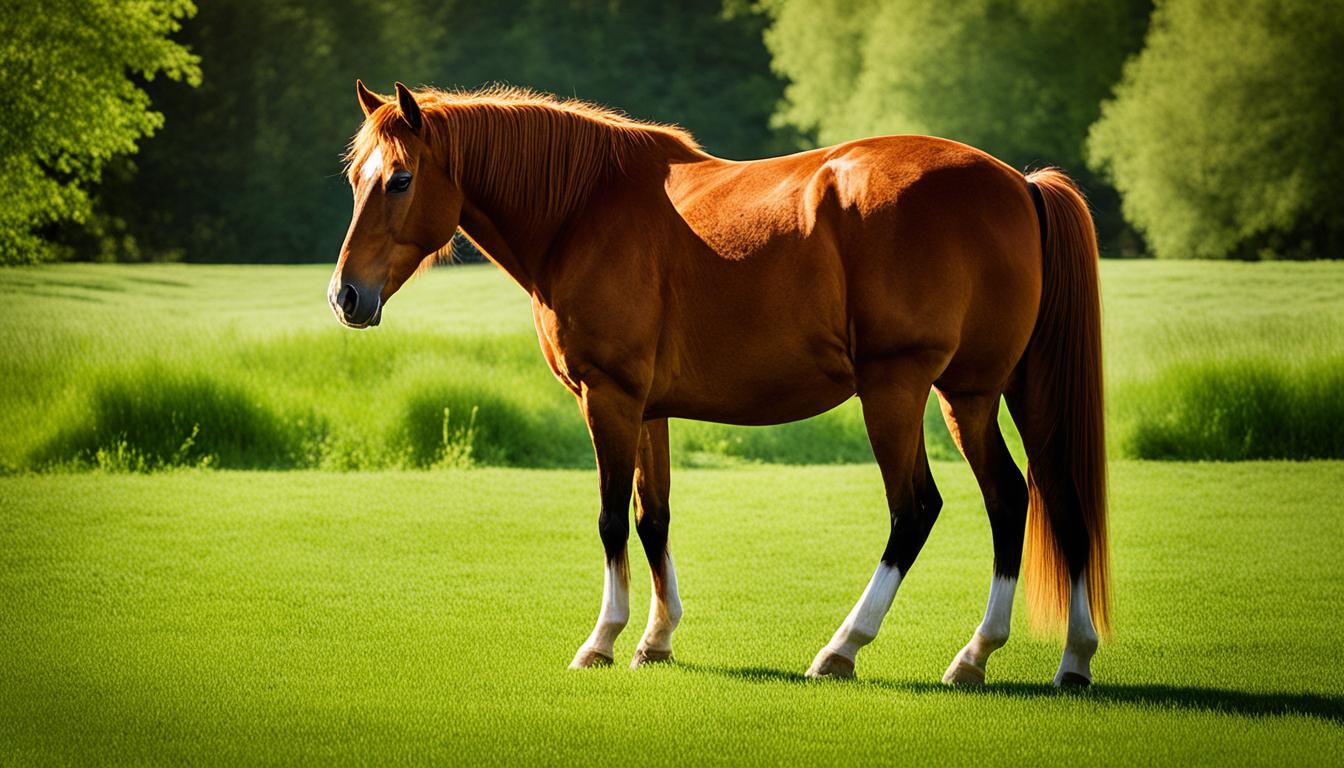When you're out in national parks or forests, foraging can be a rewarding experience, but you need to be aware of the rules that govern it. Many parks allow limited personal foraging, yet each has its own set of regulations laid out in the Superintendent's Compendium. Understanding these guidelines is crucial to protecting the environment and ensuring your foraging remains lawful. What specific permits or limitations might you encounter in your local area? The answers could be pivotal for your next outdoor adventure.
Key Takeaways
- Foraging is generally prohibited in national parks unless specifically permitted by park superintendents; always check local regulations.
- Limited foraging for personal consumption is allowed in some parks, often with strict quantity limits.
- National Forests may require permits for foraging, and regulations can vary by state parks and local jurisdictions.
- Overharvesting is discouraged, and certain species may be protected or banned from collection entirely.
- Always confirm regulations with park managers or official resources to avoid penalties and support conservation efforts.
Introduction

Foraging in national parks and forests offers a unique way to connect with nature, but it's crucial to understand the rules governing these activities. While many parks allow limited foraging, each has its own specific restrictions. Park superintendents have the authority to permit or prohibit foraging, setting rules that reflect the park's unique ecosystem and conservation goals.
You'll find that some parks encourage you to gather edible fruits, nuts, and mushrooms for personal consumption. For example, Grand Teton National Park allows foraging for a variety of berries and nuts, while Death Valley National Park features non-native fruits like grapes. Additionally, the National Park Service has recently modified policies to allow certain tribes to gather traditional plants under specific agreements. It's also important to note that foraging regulations can differ significantly across various types of public lands.
However, remember that commercial foraging is generally prohibited, except in certain National Forests.
Be mindful of quantity and location limits, as these rules help protect natural resources. In some parks, you might be restricted to gathering a quart of edible items per person per day or have specific areas designated for foraging.
Special considerations apply for federally recognized tribes, allowing them to gather plants for traditional purposes under strict agreements.
Legal Framework

Navigating the legal framework for foraging in national parks and forests requires understanding the complex interplay of regulatory authorities and federal laws. The National Park Service (NPS) operates under the Department of the Interior, while national forests fall under the US Department of Agriculture (USDA). Each has distinct rules, and state parks have their own regulations, adding further complexity.
Federal laws, specifically 36 C.F.R. § 2.1, prohibit possessing or disturbing plants without permission, although park superintendents can grant exceptions. Foraging for commercial purposes is strictly forbidden. Tribal gathering rights allow members of federally recognized tribes to collect plants for traditional uses, but they must adhere to sustainability practices outlined in agreements with the NPS. Ultimately, the growing interest in foraging as a cultural practice underscores the importance of understanding these regulations.
In fact, approximately 75% of National Parks permit some form of foraging, reflecting a shift towards recognizing the practice's cultural significance. Enforcement varies, with park superintendents holding the power to restrict foraging types, methods, and quantities. Some parks ban all foraging, while others permit it under strict guidelines. Violating these rules can lead to fines and even jail time.
Always check specific regulations, as both federal and state rules can differ significantly. Understanding this legal framework is crucial for anyone looking to forage responsibly.
Main Guidelines

Understanding the main guidelines for foraging in national parks, forests, and other protected areas is essential for anyone interested in gathering wild foods.
In national parks, foraging is generally prohibited under 36 CFR § 2.1(c), though park superintendents can allow it with specific rules. If permitted, you might gather fruits, nuts, or particular wild foods, but expect restrictions on quantity and methods, such as a ban on using ladders. For example, in Shenandoah National Park, visitors can collect small amounts of certain wild fruits like blueberries and blackberries.
In national forests, you often need a permit, which you can obtain from Forest Service offices. Permits typically allow you to collect forest products like berries and mushrooms for personal use, but limits, like one gallon per day per species, may apply. It's important to note that obtaining collection permits is necessary for resource and collector protection.
Wildlife refuges generally prohibit foraging, although some may allow it for personal use, so check the specific rules for each refuge.
State parks, like those in Alabama, strictly prohibit foraging, including the collection of plants and mushrooms.
Always confirm any unclear rules with park managers to avoid penalties, which can include fines or jail time for violations.
Best Practices

When you're out in the wild, following best practices for foraging can make a big difference in preserving the environment and ensuring your activities are legal.
Start by understanding the specific regulations of the park you're visiting. Each national park has unique rules about what plants you can harvest, how to do it, and the allowed quantities. Always check the park's Superintendent's Compendium for detailed information, as more than half of U.S. national parks allow some form of foraging. It's important to remember that national parks promote conservation, which should guide your foraging decisions.
Respecting quantity limits is crucial. For example, in Death Valley National Park, you can collect up to one quart per person per day of certain edible plants. Adhering to these limits helps prevent overharvesting and protects park resources.
Ensure your foraging practices are sustainable. Hand gathering is usually required to avoid damaging plants and their ecosystems.
Steer clear of using ladders or machinery, as these methods can harm the environment.
Lastly, be aware of restricted areas where foraging isn't allowed, like formal gardens or camping spots.
Common Mistakes to Avoid

Foraging can be an enjoyable and rewarding experience, but there are common mistakes you need to avoid to ensure you're following the rules and protecting the environment.
First, always check the park's Superintendent's Compendium before you go. Regulations vary significantly between parks, and ignoring specific rules can lead to unintended violations.
Remember that exceeding quantity limits is another common error—most parks restrict how much you can collect, so track your intake to avoid fines.
Using prohibited methods is a big no-no. Stick to hand harvesting, as tools like ladders or machinery are often banned.
Additionally, you should respect restricted areas. Foraging in places like formal gardens or designated camping areas can harm sensitive ecosystems or lead to penalties.
Lastly, don't overlook seasonal restrictions. Some plants may only be harvested during specific times, and harvesting out of season can damage the ecosystem.
Special Considerations

Special considerations play a crucial role in responsible foraging within national parks and forests.
You'll need to understand the unique rights and regulations that apply, especially concerning Indigenous and tribal foraging rights. Members of federally recognized tribes may have specific agreements that allow them to forage for traditional purposes, with guidelines on what plants, quantities, and methods are permitted.
Quantitative and methodological restrictions are common, like limits on how much you can collect—such as one quart per person per day for berries in Yellowstone National Park.
You'll often need to gather by hand and only for personal use, with some areas designated for foraging while others are off-limits.
Environmental and conservation considerations are also crucial. Park superintendents have the authority to restrict foraging to prevent overharvesting and might impose temporary bans to protect plant populations.
Certain species, like American Ginseng, are completely banned from harvest to aid conservation efforts.
Resources and References

Understanding the rules and resources related to foraging in national parks and forests is essential for anyone looking to explore this rewarding activity. Each park has its own regulations, often outlined in the Superintendent's Compendium. You should always check this document for specific rules regarding what you can forage and the allowed quantities.
For instance, while Death Valley National Park permits gathering mesquite beans and fruits of non-native plants, you can only collect less than one quart per person per day.
In contrast, Grand Teton National Park allows foraging of edible fruits and mushrooms with a limit of one quart per species per person per day.
Besides national parks, consider other public lands. National Forests require permits for foraging, while some state parks have their own rules that may differ significantly from national parks.
For accurate, up-to-date information, visit the official websites of the specific parks or the Forest Service.
Conclusion
In conclusion, foraging in national parks and forests can be a rewarding experience if you understand the rules and regulations. Always check the specific guidelines for the area you're visiting, respect quantity limits, and obtain any necessary permits. By following these practices, you'll help protect our natural ecosystems while enjoying the bounty they offer. Remember, staying informed and responsible ensures that future generations can enjoy foraging just like you do today. Happy foraging!

